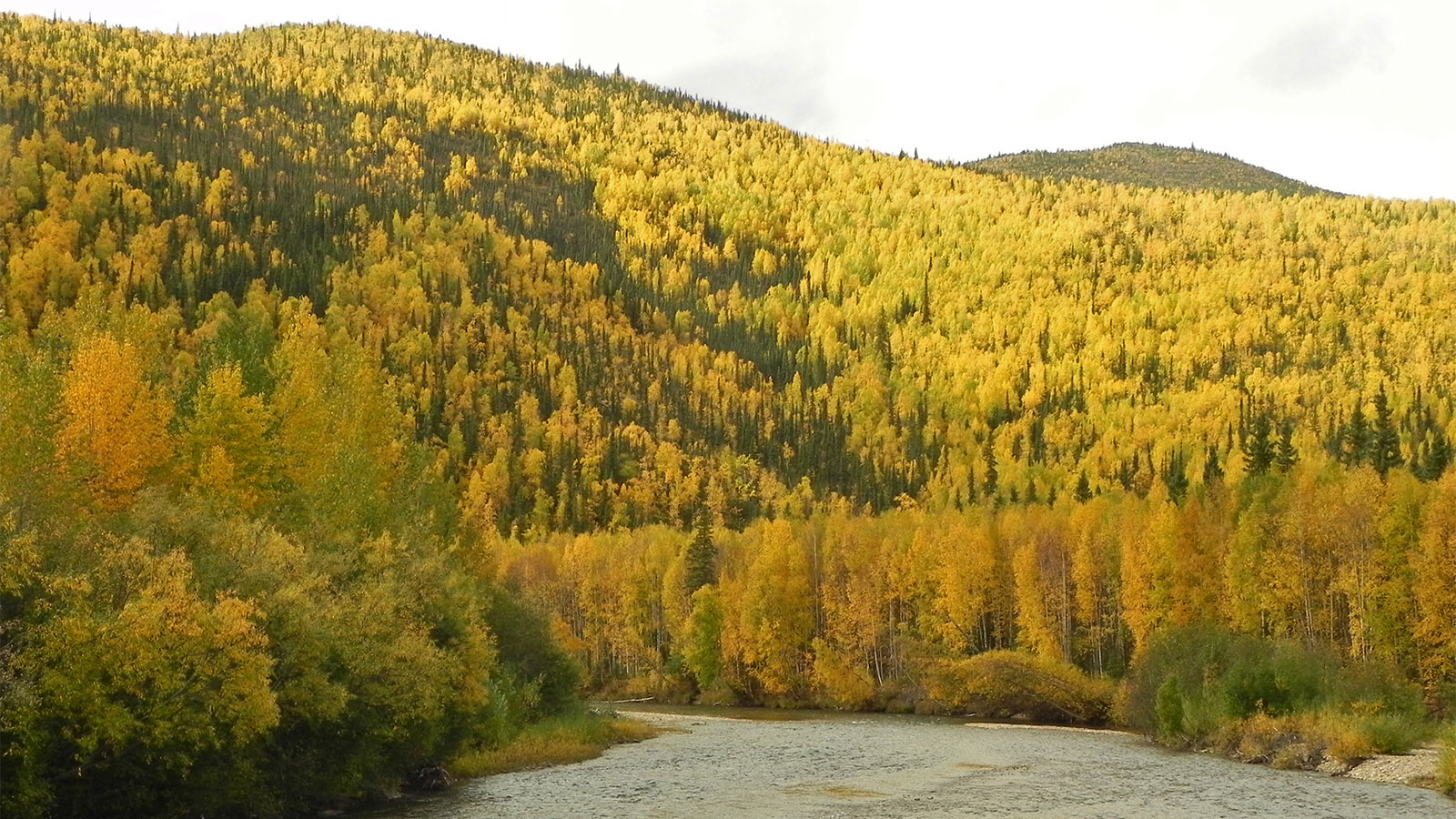Back in 2004, when wildfires in Alaska burned an area the size of Massachusetts, Michelle Mack wondered just how much carbon had permanently moved from the landscape into the atmosphere.
Mack, an ecologist at Northern Arizona University, knew that the carbon dioxide released by these burning trees could further accelerate global warming. But her study of regrowth in Alaska’s burned areas, published Thursday in the journal Science, turned out to be unexpectedly hopeful. The scorched boreal forests are rapidly regenerating. In fact, they are on track to hold a lot more carbon than they did before the fires.
How is that possible? Before the fires, slow-growing black spruce trees had dominated the boreal forest. In the severely burned areas, however, faster-growing aspen and birch trees have largely replaced them. These deciduous trees suck carbon out of the air and transform it into wood much more quickly than the previous evergreen forest.
“For me, it was surprising,” Mack said. “I didn’t think all that carbon could be offset. We keep talking about this runaway train of positive feedbacks accelerating climate change, but this looks like a brake.”
Massive fires in the northern boreal forests are becoming more common: In 2019, fires raged for months in Alberta, and millions of acres routinely burn in Russia. Boreal forests tend to burn every 100 years or so, releasing carbon dioxide in the flames, then gathering it back in new growth. It’s a little like respiration — one breath per century. To figure out how this slow cycle is changing, the scientists working with Mack surveyed forest areas at various stages of growth, mapping out how carbon accumulates. They also took measurements over 13 years of soil carbon and tree growth at 75 sites that burned in 2004.
The researchers found that the aspen forests accumulated carbon four times faster than the spruce forests and, over the span of 100 years, came to hold 160 percent more carbon. The new deciduous forests are also more resistant to fire. Aspen forests hold most of their carbon in the trees themselves, which are relatively moist and hard to burn. Spruce forests, on the other hand, store most of their carbon in the soil, which consists of layers of moss. When these mosses dry out, they make excellent tinder.
Every type of forest is different: What works in Alaska won’t work the same way in the Rocky Mountains, said Matthew Hurteau, a forest ecologist at the University of New Mexico. But researchers working on other types of forests have been talking about the idea that deciduous trees might serve as a kind of firebreak to slow down blazes in coniferous forests. The resinous needles of pines and spruce are denser and have less water content than the broad leaves of aspens. “Fire just doesn’t carry as well if you have those broad leafed trees breaking up the forest,” Hureau said.
It’s good for the climate that these northern forests are able to capture more carbon after severe burns. But it doesn’t follow that humans should try to speed the process along, setting out-of-control fires on purpose. These forests are just too big, and too remote, for people to manage, Mack said. Instead, she likes to think of this finding as a rare glint of hope from climate science. “It’s just one tiny positive in a great field of negatives,” she said.



